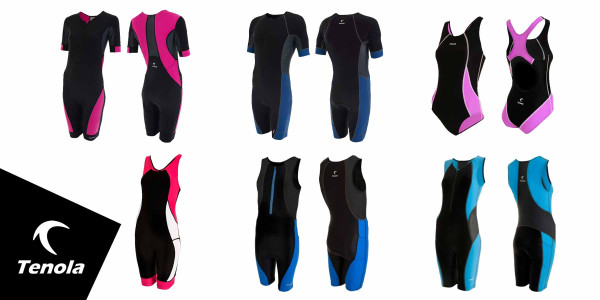
The tri-suit is unique in the world of sport. In the design and testing stage of a tri-suit, consideration is given to the challenges triathletes face when competing in three disciplines (swimming, cycling and running).
The tri-suit design influences the physiological comfort needs of wellbeing and performance for an athlete.
The tri-suit needs to be a tight fit to the body, but not so tight to restrict the movement of arms and legs in any of the three disciplines. A tri-suit needs to fit like a second skin to reduce DRAG. Any loose clothing, rippled, or torn will increase drag through the water when swimming or cycling/running in air.
Swimming:- Features possibly used in tri-suits for reducing the drag in the water
Cycling:- Wind drag on a flat road can be 70%- 90% of the total resistance a rider may experience while pedaling. The drag force increases with the square of the wind speed. Drag is always present and is dependent on different parameters (i.e., speed of travel, helmet design, positioning on the bike, clothing worn, bike aerodynamics). Features used in tri-suits for reducing the drag in air
Running:- Due to the relative slow speed attained while doing the run discipline (compared to cycling speeds) the drag force is much lower. Introducing any drag force reducing features so that any triathlete could gain an advantage is impossible. Triathletes come in all shapes and sizes.
This leads onto another consideration in tri-suit design which is more related to cycling and running – Thermoregulatory evaluation. What is thermoregulatory? How does it affect a triathlete?
Thermoregulation is a process that allows your body to maintain its core internal temperature. All thermoregulation mechanisms are designed to return your body to homeostasis. This is a state of equilibrium. A healthy internal body temperature falls within a narrow window. The average person has a baseline temperature between 98°F (37°C) and 100°F (37.8°C). Your body has some flexibility with temperature. However, if you get to the extremes of body temperature, it can affect your body’s ability to function if your body temperature falls to 95°F (35°C) or lower, you have “hypothermia.” If your body temperature rises as high as 107.6°F (42 °C), you can suffer brain damage or even death.
Helping a triathlete control his internal body temperature is an important aspect of designing a tri-suit for comfort. Ignoring the thermo requirements, can influence wellbeing, efficiency, and performance. The mechanical, thermal and moisture interactions of the body with the tri-suit, influence the athlete’s thermoregulatory responses within varied range of environmental climates and physical activities.
A study conducted by Olga Troynikov, Elnaz Ashyer in “Thermoregulatory evaluation of triathlon suits in regards to their physiological comfort properties” [2] stated
“This study demonstrated that the physiological comfort properties of triathlon suits are determined by both the fabrics and materials used and also the design and construction of the garments. It is possible by altering the design of the garment and, most importantly, by selection of the materials with relevant performance attributes, to engineer the garments with optimal performance.”
The study [2] mentions several factors which can affect the performance of a tri-suit on a triathlete.
Tenola tri suits are available to buy here >
References
1.) Joseph C. Mollendorf, Albert C. Termin Ii , Eric Oppenheim , And David R. Pendergast, in Effect of Swim Suit Design on Passive Drag, 2004
2.) Olga Troynikov* , Elnaz Ashyeri in Thermoregulatory evaluation of triathlon suits in regards to their physiological comfort properties.
Tenola founder and CEO Ian Nolan has a lifelong love of all things active and has competed in a variety of sports over the years involving mud, sweat and tears – the latter following various serious sporting injuries! But it was the challenge of the dual or tri-disciplines of Triathlon, testing not only fitness but endurance and skill that truly captivated him and led to an ongoing passion for the sport. Read More >